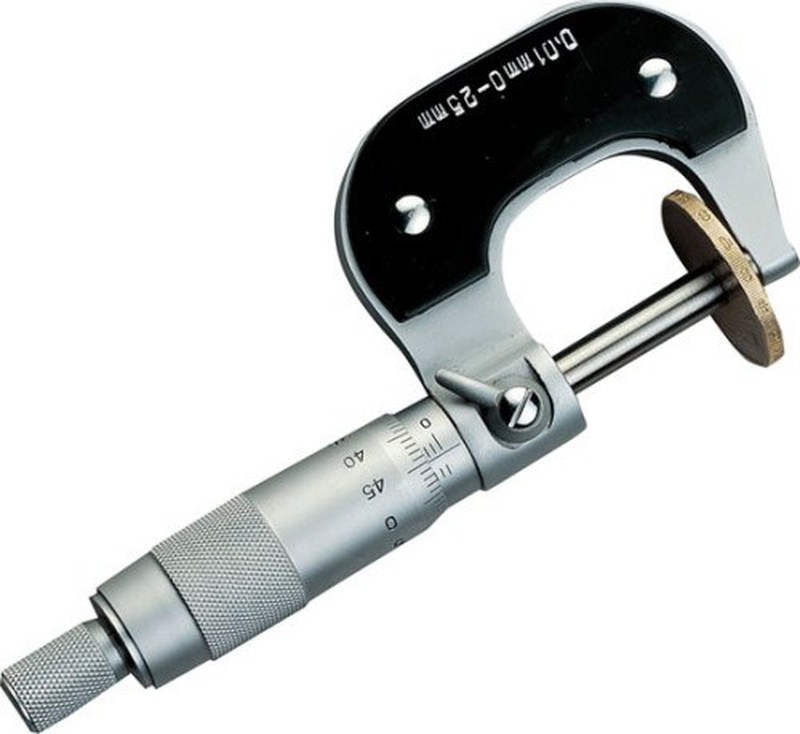Taking measurements, what to measure? and how to measure it?
The human being has always wanted to know more about his environment and has acquired different tools to measure objects, distances, weights, etc ...

Any environmental variable and / or associated with an object or person is capable of being valued or measured. Thus we can measure the meteorological variables, the distance between two points, the weight of a certain object or substance, the volume, the density, the degrees of alcohol, the PH, the intensity of the sound, the intensity of light, the concentration of gases and particles, etc.
To carry out these measurements or evaluations, we need to equip them with the appropriate measurement instruments, and at the same time, this is as accurate as possible. Accuracy is a very important characteristic in science, because a small error can be transformed into a consequence or product very different from the expected one.
Measurements are expressed in units, which we will then compare or write down so that we can fairly assess them. These units must follow the criteria imposed by the international system. Thus, for example, the weight is expressed in kilos, length in m, temperature in degrees, volume in mm / ml / cc, sound in decibels, concentration in ppm, etc ...
To measure lengths or distances we do it in mm, cm, m or Km and we can equip ourselves with different instruments depending on the frame of use and the precision that we need. Analog and digital equipment are currently available, which complement each other perfectly.
- For personal use and related to physical activity we have pedometers, which measure steps and distances.
- For domestic and industrial use we have flexometers and measuring rulers.
- For architecture we will use laser distance meters, capable of measuring lengths and volumes inside buildings. They reach measurement distances of up to 500m.
- To measure large distances outdoors we will equip ourselves with a rangefinder, taking into account that in certain cases they are incorporated into binoculars or binoculars.
- For topography we must use the measuring wheels, the topographic poles and if we want more precision we will use the theodolites.
- For industry, engineering, architecture, laboratory and materials science, vernier calipers and micrometers, both analog and digital, will be useful. With them we can measure very small lengths with extreme millimeter precision
The weight of an object is the product of its mass by Earth's gravity. Weight is measured in Newtons or in Kilos, according to the criteria of the International System. There are two essential criteria to select the instruments that will allow you to measure the weight. The first is the maximum weighing capacity. How much do we want to weigh? The second is precision or resolution. What resolution do I need (kg, gr, mg)? The type of object / product will make us decide our decision.
- For the weighing of small jewels, precious metals and powdered or very light substances we will use precision balances. which give us resolutions of between 0.1 and 0.01gr and capacities between 50gr and 2kg.
- To weigh from small objects to suitcases in industrial and domestic environments we can equip ourselves with a dynamometer, this will measure us in Kg, gr or Newtons.
- For kitchen we are interested in a household scale, with a resolution of grams and a capacity of up to 5 or 10kg.
- For industrial and / or commercial use, the scales tend to be of much higher capacity and lower resolution.
If what we want is to measure or analyze certain physical and chemical characteristics of a product, then we must use more specific meters for each of these variables. In laboratory or field analysis we may be interested in knowing the value of PH, conductivity, dissolved oxygen, density, alcohol, sugar, etc.
- To know the degree of acid / base we will use a PH meter or phimeter, which can be a litmus paper strip or a digital meter.
- To assess the conductivity we will use a conductimeter, this value will indirectly measure the ions of the liquid and also the salinity
- To know the density of a liquid, often of an alcoholic drink, we will use a densimeter.
- In the case of alcoholic beverages, we will also use alcoholometers and musters to assess the degree of alcohol and saccharometers and / or refractometers to determine the density of sugars.
- In pool water or fountains we may also be interested in knowing the level of chlorine, if so we will use a chlorimeter.
Finally, it may be that our work or simply our curiosity, needs to measure different variables of the environment and air that surrounds us. The most common and interesting parameters for human health are noise, electromagnetic radiation, ionizing radiation, light, and the contamination of gases and particles.
- Noise levels and scales are determined from a sound level meter and measured in decibels. Noise pollution can cause hearing problems.
- Electromagnetic radiation is divided into high and low frequencies. Low frequencies are emitted by household appliances and high frequencies are emitted by different forms of communication (3G, WI-FI ...)
- Ionizing radiation is the most dangerous and is divided between x-rays, gamma rays, and alpha and beta rays. Geiger counters are portable instruments that measure this type of radiation.
- The polluting gases are very varied, and among the most common we have C02, NO2, CO and ozone. These gases are measured with specific meters and are evaluated in ppm.
- The light or luminosity can also be measured, in this case we will use a lux meter and the units are lux.







Opinions of our clients
Receive our news